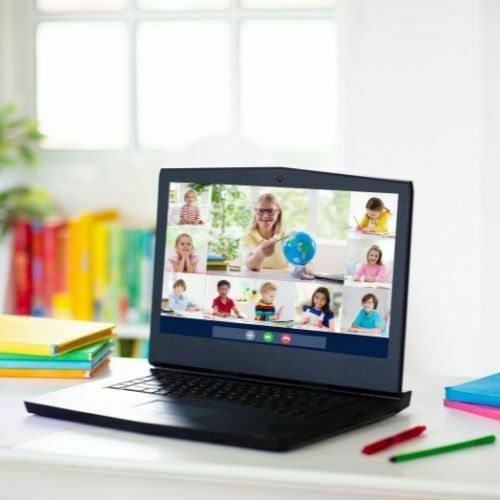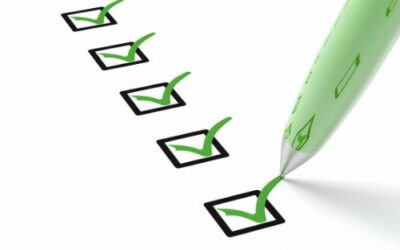
Education has seen an influx of emerging technologies in the last decade. SmartBoards, tablets, e-readers, touch-pads, VR headsets and digital pads are now common features of a modern classroom. There are many educators and school administrators out there who will tell you that, although this technology adds a lot of value to the learning experience, they represent huge investment which puts a strain on budgets.
Add this to the essential assets that any school needs- computers, textbooks, vending machines and art & technology equipment- and you begin to see just how important assets are to the process of education. Maintaining, tracking and protecting assets has never been more essential for schools. When it comes to high-value assets, there is no room for human error. That’s where a digital school asset register can make all the difference.
Asset Tracking in Education
The number of fixed assets that any one school has can run into the 1000s. Keeping on top of even 100 assets is a mammoth task which is prone to human error and puts pressure on the administrative team. However, it is now cost-effective for schools to use bespoke asset management software that can take the risk and headache out of the process.
A school asset register is part of a software solution that is accessible via a web or mobile application. Once set up, administrators can see where any asset is, who is using it, its state of repair and the like all in one place.
How Does Asset Tracking Work
The actual process varies depending on the asset and the school’s desired level of functionality. Generally, an asset is added to the register using image recognition. A QR or RFID tag is added to the item so that it can be tracked automatically. In this way, assets can be assigned to users or departments.
What Can You Track With A School Asset Register?
There isn’t really a limit to what you can track. The question is more, what is useful for you to track? QR tags are an affordable way of tracking lower value items like textbooks. It’s often smaller items that go missing, and over time, this has a negative impact on available budgets.
Then, there are high value items. It’s simply common sense to keep a tight watch on these items. RFID tags are ideally suited for this. You can use fixed RFID checkpoints to make sure that administrators are notified when a tablet or similar is taking off the premises! More than this, you can see to whom the item was last assigned.
For the sake of thoroughness, below is a list of the kind of asset that schools generally add to their asset register:
- Textbooks
- SmartBoards
- Bathroom supplies
- Printers
- Standing desks
- Projectors
- Lab equipment
- First aid items
- E-readers
- Student desks
- Tablets
- Laptops
- Office chairs
- Cafeteria equipment
School Asset Tracking Features
Every school has a different way of doing things. However, if you represent a school and are thinking about investing in asset register software, here are a few ideas that should get the imagination working!
Check In / Check Out
Items that are often taken out of school, are prone to going missing! Even if items are moving about the school and being used by multiple departments, there is a risk of losing track of an asset and not being able to effectively look into what has happened.
Using tracking technologies accessible with a school asset tracking register, it is simple to implement a simple check in / check out system. When an item is assigned to a student, this is automatically updated in your asset register
Library books or computing equipment that can be taken off site, are a good example of assets that can benefit from a system like this. This system is of particular use during lockdowns or if students are remote learning.
Assign Assets
As already alluded to, it is easy to assign assets to students, teachers or departments. Apart from the obvious benefit of being able to see what use your assets are being put to, there are some other reasons that this function can help maintain assets. For example, you can see what departments are using what assets.
That means you will have reliable data on what effect the tech is having compared to departments that do not have access.
Furthermore, you might be surprised just how many losses and breakages are avoided when users realise the assets are being properly tracked!
Maintain Health & Safety Standards
Modern schools are constantly dealing with issues that are not strictly related to education. Health and safety is high on this list. With an asset tracking register, it is easy to ensure that all assets are properly maintained. It’s even possible to tackle issues before they happen and avoid issues like overheating.

Building Your School Asset Register With itemit
Not only can itemit give you access to all the features described above, it has been built to fit in seamlessly with your current systems. We understand that it is vital that schools are responsible about mitigating risks that might cause disruption to the learning environment. Whether these come in the form of undue stress for teachers and administrators or a breakdown in processes.
That’s why itemit are determined to always add value, not create issues. Asset tracking works on paper, but a poor implementation or half baked solution can create more problems than solutions. itemit have completed many implementations, so we feel confident that the once your new system is in place, you won’t look back!
If you are using spreadsheets as a school asset register, then asset tracking software is a guaranteed step-up that will give you markedly better control and insight.
Book a demo today to see all itemit’s features in action. To find out more details, you can always contact our team at team@itemit.com.

Try itemit
Choose a better way to track
your assets.
Start your free 14-day trial now!

Keep Learning
itemit Blog
Tips, guides, industry best practices, and news.
Why Having An Accurate Asset Register Is Important
Why is having an accurate asset register so important and how can it help with equipment tracking? Read this post now to find out!
What To Include In Your Fixed Asset Register
What should you include in your fixed asset register and how can you make it work for you? Read this post now to find out!
What Exactly Is An Asset register?
What exactly is an asset register and will your chosen asset register format offer you everything you need? Read this post to find out!




